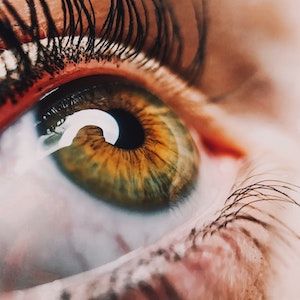Analysis Supports Role of Lotilaner Ophthalmic Solution for Demodex Blepharitis
In a systematic review and meta-analysis of available data, lotilaner ophthalmic solutions outperformed placebo, with few side effects, in treating Demodex blepharitis.
Credit: Unsplash/Perchek Industries

A recent systematic review and meta-analysis evaluated the safety and efficacy of lotilaner ophthalmic solution (0.25%) as a treatment for Demodex blepharitis, a common eye condition occurring from an infestation of Demodex mites in the hair follicles of eyelashes.
Using data from four randomized controlled trials and two single-arm studies, the review demonstrated the effectiveness and tolerability of lotilaner ophthalmic solution 0.25% for mite eradication and clinically meaningful collarette scores in patients with the condition.
“The availability of specific, novel therapy for this condition, rather than non-specific options that are currently being implemented, makes it easier for ophthalmologists and physicians to deal with these cases quickly and efficiently while improving the quality of life of patients, wrote the investigative team, led by Abdulqadir J. Nashwan, department of nursing, Hamad Medical Corporation.
Demodex blepharitis is known to impact a significant portion of the general population, with approximately 25 million adults in the United States alone estimated to be affected by the condition. The condition presents a variety of clinical manifestations, including disruption in the tear film, dysfunction of meibomian glands, swollen, red eyelids, and the misalignment or loss of eyelashes.
Management strategies before the discovery of lotaliner, including topical tea tree oil and antibiotics, were each linked to irritable effects or systemic adverse effects. Endorsed for treating pet flea and tick infestations, lotaliner, an antiparasitic compound belonging to the isoxazoline class, results in the paralysis and subsequent demise of Demodex mites.
Given its promise for managing Demodex blepharitis, the targeted, novel therapy received US Food and Drug Administration (FDA) approval in July 2023.
Nashwan and colleagues noted no analysis has been performed to evaluate the safety and efficacy of the drug across the available clinical trials. In the current systematic review and meta-analysis, an extensive search was performed in the PubMed, Cochrane Library, Scopus, and Google Scholar databases for relevant articles from creation until August 2023.
Relevant studies were observational studies, single-arm experimental studies, or randomized controlled trials—each needed to comprise all age groups of patients with Demodex blepharitis, with an intervention consisting of topical lotilaner Ophthalmic Solution (0.25%) given to patients in at ≥1 trial arm.
Treatment goals related to Demodex blepharitis included decreasing the mite density by mite eradication, with an evaluation of the clinically meaningful collarette score, to determine the efficacy of the lotaliner ophthalmic solution. Overall, the initial search identified 143 articles in the databases, of which six met the criteria for eligibility in the systematic review and four RCTs were included in the meta-analysis of mite eradication incidence.
Upon analysis, lotilaner ophthalmic solution was effective in eradicating Demodex mites in patients with Demodex blepharitis versus the control group (risk ratio [RR], 3.55; 95% CI, 2.87 - 4.40; P <.00001), with no heterogeneity reported (I2 = 0%).
Meanwhile, the meta-analysis of clinically meaningful collarette score of the intervention cohort versus the control cohort revealed a summary RR of 3.15 (95% CI, 2.56 - 3.89; P <.00001), with mild heterogeneity (I2 = 27%).
A qualitative review of adverse effects reported that while rare, a few studies reported lotaliner treatment-related effects, including mild burning, redness, blurriness, mild eye pain, eye discharge, or mild skin irritation. As these events affected a minority of study participants, investigators noted these data reaffirmed the favorable safety profile of the drug.
Assessment occurred using the Grading of Recommendations, Assessment, Development, and Evaluation (GRADE) approach. The GRADE evaluation yielded a moderate quality of evidence for the pooled results of both outcomes, suggesting the promise of lotilaner in treating Demodex blepharitis.
“These encouraging results further strengthen the case for adding lotilaner as a great alternative option in comparison to the current management strategies,” Nashwan and colleagues wrote.
References
- Talha M, Haris Ali M, Fatima E, Nadeem A, Ahmed A, Nashwan AJ. Efficacy and Safety of Lotilaner Ophthalmic Solution (0.25%) for the Treatment of Demodex Blepharitis: A GRADE Assessed Systematic Review and Meta-Analysis of Observational & Experimental Studies. Am J Ophthalmol. Published online March 19, 2024. doi:10.1016/j.ajo.2024.03.019
- Trattler W, Karpecki P, Rapoport Y, et al. The Prevalence of Demodex Blepharitis in US Eye Care Clinic Patients as Determined by Collarettes: A Pathognomonic Sign. Clin Ophthalmol. 2022;16:1153-1164. Published 2022 Apr 15. doi:10.2147/OPTH.S354692
- Iapoce C. FDA approves Lotilaner Ophthalmic Solution for treatment of demodex blepharitis. HCP Live. July 25, 2023. Accessed April 1, 2024. https://www.hcplive.com/view/fda-approves-lotilaner-ophthalmic-solution-treatment-of-demodex-blepharitis.